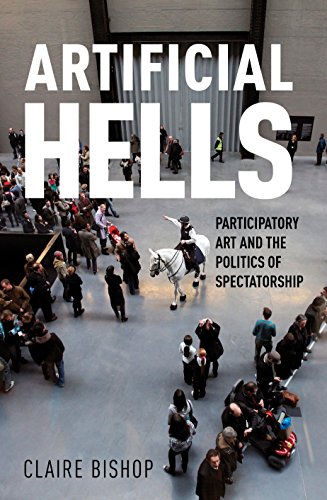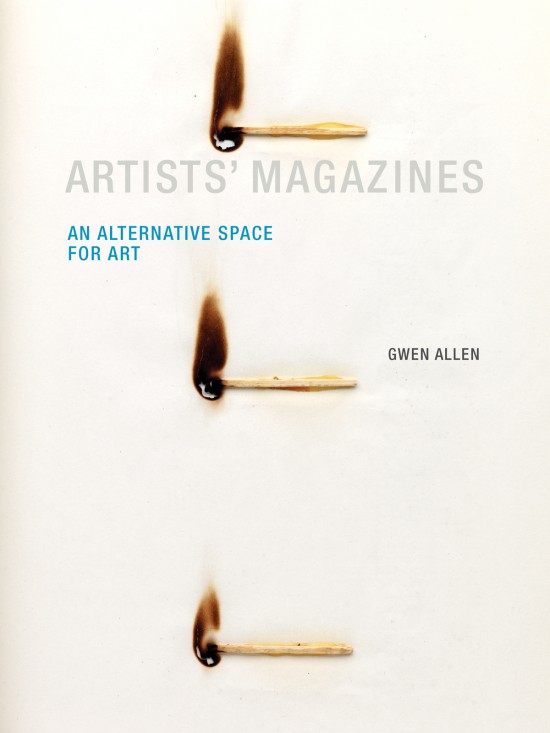Larry Austin, Douglas Kahn (eds.): Source: Music of the Avant-Garde, 1966-1973 (2011)
Filed under book | Tags: · 1960s, 1970s, art, composing, computer music, electroacoustic music, electronic music, experimental music, fluxus, intermedia, music, music history, music theory, performance, sound recording, tape music

“The journal Source: Music of the Avant-garde was and remains a seminal source for materials on the heyday of experimental music and arts. Conceived in 1966 and published to 1973, it included some of the most important composers and artists of the time: John Cage, Harry Partch, David Tudor, Morton Feldman, Robert Ashley, Pauline Oliveros, Dick Higgins, Nam June Paik, Steve Reich, and many others. A pathbreaking publication, Source documented crucial changes in performance practice and live electronics, computer music, notation and event scores, theater and installations, intermedia and technology, politics and the social roles of composers and performers, and innovations in the sound of music.”
Publisher University of California Press, Berkeley, CA, 2011
Roth Family Foundation Music in America Books series
ISBN 0520267451, 9780520267459
382 pages
Reviews: Continuo (2011), Michael Boyd (Computer Music Journal, 2013).
Wikipedia (about the journal)
Publisher
PDF (removed on 2013-7-18 upon request of the publisher)
Comment (0)Claire Bishop: Artificial Hells: Participatory Art and the Politics of Spectatorship (2012/2022)
Filed under book | Tags: · art, art criticism, art history, art theory, audience, contemporary art, dada, fluxus, participation, politics, proletkult, situationists, theatre

“Since the 1990s, critics and curators have broadly accepted the notion that participatory art is the ultimate political art: that by encouraging an audience to take part an artist can promote new emancipatory social relations. Around the world, the champions of this form of expression are numerous, ranging from art historians such as Grant Kester, curators such as Nicolas Bourriaud and Nato Thompson, to performance theorists such as Shannon Jackson.
Artificial Hells is the first historical and theoretical overview of socially engaged participatory art, known in the US as “social practice.” Claire Bishop follows the trajectory of twentieth-century art and examines key moments in the development of a participatory aesthetic. This itinerary takes in Futurism and Dada; the Situationist International; Happenings in Eastern Europe, Argentina and Paris; the 1970s Community Arts Movement; and the Artists Placement Group. It concludes with a discussion of long-term educational projects by contemporary artists such as Thomas Hirschhorn, Tania Bruguera, Paweł Althamer and Paul Chan.
Since her controversial essay in Artforum in 2006, Claire Bishop has been one of the few to challenge the political and aesthetic ambitions of participatory art. In Artificial Hells, she not only scrutinizes the emancipatory claims made for these projects, but also provides an alternative to the ethical (rather than artistic) criteria invited by such artworks. Artificial Hells calls for a less prescriptive approach to art and politics, and for more compelling, troubling and bolder forms of participatory art and criticism.”
Publisher Verso Books, London, 2012
ISBN 1844676900, 9781844676903
390 pages
Reviews: Josephine Berry Slater (Mute, 2012), Mechtild Widrich (caa.reviews, 2013), Marcus Verhagen (New Left Review, 2014), Kenn Watt (Drama Review, 2014), Kim Charnley (Art Journal, 2014), Joseph Henry (New Inquiry, 2012), Jaenine Parkinson (Vague Terrain, 2011), Ryan Wong (Hyperallergic, 2012), Alexander Provan (NY Observer, 2012), Leah Lovett (Dark Matter, 2013), David M. Bell (Political Studies Rev, 2017), Corinne Segal (Boston Review, 2012), Christine Korte (Public, 2013), Jennie Klein (PAJ, 2015).
PDF (7 MB, updated on 2019-3-18)
PDF (new ed., 2022, 38 MB, added on 2025-7-23)
Gwen Allen: Artists’ Magazines: An Alternative Space for Art (2011)
Filed under book | Tags: · art, artists book, conceptual art, fluxus, magazine, mail art, photography, poetry, publishing

“Magazine publishing is an exercise in ephemerality and transience; each issue goes out in the world only to be rendered obsolete by the next. To publish a magazine is to enter into a heightened relationship with the present moment. During the 1960s and 1970s, magazines became an important new site of artistic practice, functioning as an alternative exhibition space for the dematerialized practices of conceptual art. Artists created works expressly for these mass-produced, hand-editioned pages, using the ephemerality and the materiality of the magazine to challenge the conventions of both artistic medium and gallery. In Artists’ Magazines, Gwen Allen looks at the most important of these magazines in their heyday (the 1960s to the 1980s) and compiles a comprehensive, illustrated directory of hundreds of others.
Among the magazines Allen examines are Aspen (1965–1971), a multimedia magazine in a box—issues included Super-8 films, flexi-disc records, critical writings, artists’ postage stamps, and collectible chapbooks; Avalanche (1970-1976), which expressed the countercultural character of the emerging SoHo art community through its interviews and artist-designed contributions; Art-Rite (1973-1978), an irreverent zine with a disposable, newsprint format; Real Life (1979-1994), published by Thomas Lawson and Susan Morgan as a forum for the Pictures generation; 0 to 9 (1967–1969), a mimeographed poetry magazine founded by Vito Acconci and Bernadette Meyer; FILE (1972–1989), founded by the Canadian collective General Idea, its cover design a sly parody of Life magazine; and Interfunktionen (1968–1975), founded to protest the conservative curatorial strategies of Documenta. These and the other magazines Allen examines expressed their differences from mainstream media in both form and content: they cast their homemade, DIY quality against the slickness of an Artforum, and they created work that defied the formalist orthodoxy of the day. (A work by John Baldessari from the late 1960s shows a photograph of Artforum, captioned “THIS IS NOT TO BE LOOKED AT.”) Artists’ Magazines, featuring abundant color illustrations of magazine covers and content, offers an essential guide to a little-explored medium.”
Publisher MIT Press, 2011
ISBN 0262015196, 9780262015196
300 pages
Reviews: Maarten van Gageldonk (Tijdschrift voor Tijdschriftstudies, 2012), Lucy Mulroney (West 86th, 2012), Alexander Provan (Bidoun, 2011), Dave Dyment (Magenta, 2012), Guy Crucianelli (PopMatters, 2011).
PDF (removed on 2018-8-20 upon request from publisher)
Comment (0)
